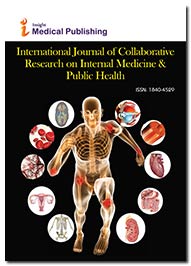Abstract
Reliability and validity of the medical outcomes study, a 36- item short-form health survey, (MOS SF-36) after one-year hospital discharge of hip fracture patient in a public hospital
Introduction: There is scarce of data in terms of health-related quality of life for hip fracture patients in Thailand due to the following: (i) lack of epidemiological aspects of hip fracture (eg. the relative incidence of osteoporosis, falls fractures and repeat fractures) in particular subgroups, (ii) lack of health status and quality of life aspects of both illness itself and the availability of different treatment options especially for elderly people. (iii) a substantial variation in terms of outcomes of care for patients and service for hip fractures. Objective: Hip fracture is a major healthcare burden in Thailand. This study explores quality of life for hip fracture patients from perspective of (i) Reliability of patient-reported outcomes (ii) Some clinical and demographic characteristics related to patient-reported outcomes
Method: Pre-hospital discharge 201 hip fracture patients were screened and follow-up over one year. Mail survey by a self-rated Medical Outcomes Study, a 36-item Short-Form Health Survey (Thai) dispatched for follow-up, other clinical and demographic characteristics were collected through direct interviews from patients or caregivers during recruitment with simultaneous crosschecking from medical records. A descriptive cross-sectional analysis was performed.
Result: Mails responder represented by 59.2% (N=119), with 36.1% (N=43) and 63.8% (N=76) for patient and caregiver rated outcomes. Mean(SD), [95% CI] score for physical, mental and global health of patient and care-giver rated outcomes of 36.2(10.6)[32.9-39.4], 54.5(10.0)[51.4- 57.5],43.9(9.3)[41.0-46.7], and 34.6(12.3)[31.7-37.4], 52.5(12.3)[49.6-55.3],42.7(11.1)[40.1- 45.2] were not statistically difference with p-value at 0.630,0.330 and 0.788 respectively. Respecting Cronbach’s alpha reliability coefficient by patients versus caregivers rated of the MOS SF-36 were 0.90 vs 0.91, 0.78 vs 0.84 and 0.90 vs 0.92. The presence of comorbidity significantly explains differences for quality of life outcomes in all health dimensions.
Conclusion: Health-related quality of life assessment with MOS SF-36 one year after hospital discharge for hip fractures patients was reliable. These results provided useful information related to post-treatment health-related quality of life outcomes. The shortcoming and limitation in terms of recall and report bias could be anticipated. The authors provided further justification for strength and weakness of implications for post-discharge health-related quality of life mail survey and future research aspects suggested.
Author(s): Anan Udombhornprabha , Jariya Boonhong , Tawechai Tejapongvorachai
Abstract | Full-Text | PDF
Share this

Abstracted/Indexed in
- Google Scholar
- Genamics JournalSeek
- CiteFactor
- Directory of Research Journal Indexing (DRJI)
- WorldCat
- Proquest Summons
- Secret Search Engine Labs
Open Access Journals
- Aquaculture & Veterinary Science
- Chemistry & Chemical Sciences
- Clinical Sciences
- Engineering
- General Science
- Genetics & Molecular Biology
- Health Care & Nursing
- Immunology & Microbiology
- Materials Science
- Mathematics & Physics
- Medical Sciences
- Neurology & Psychiatry
- Oncology & Cancer Science
- Pharmaceutical Sciences

